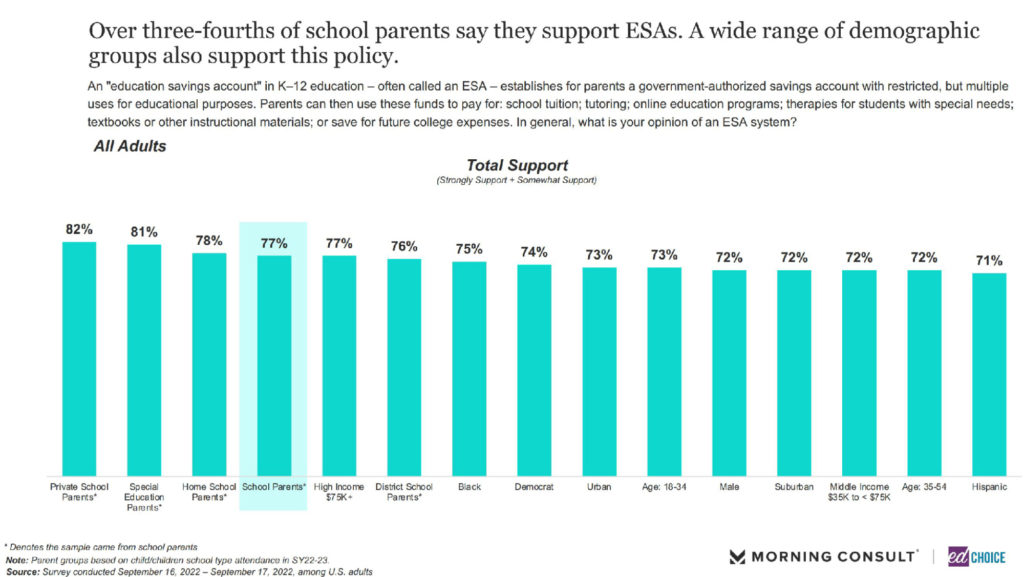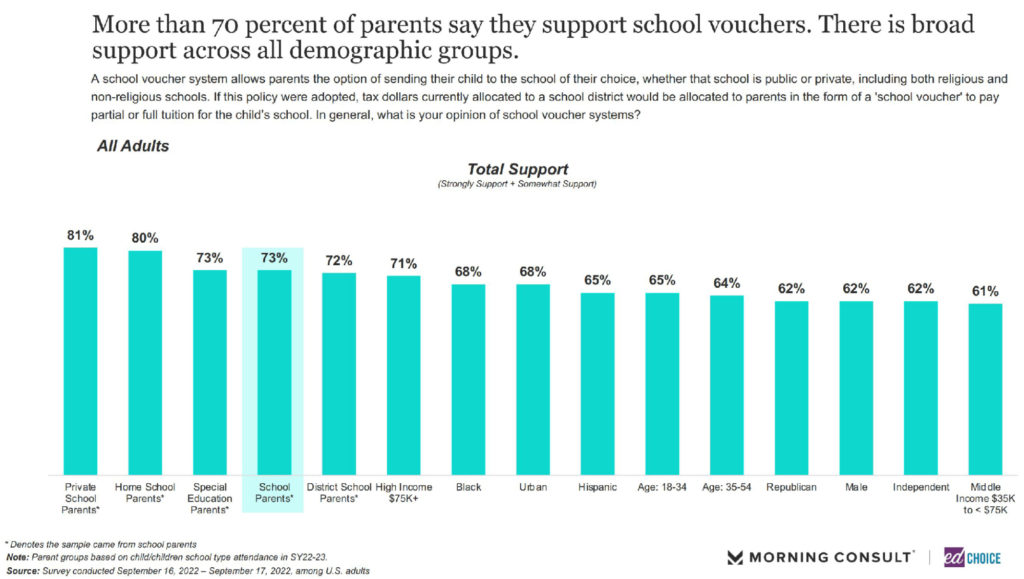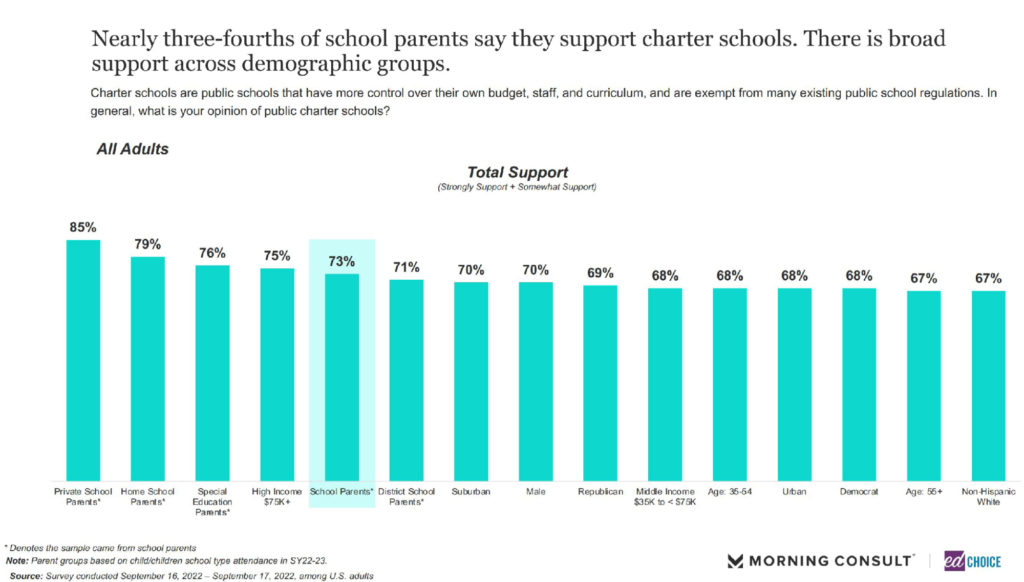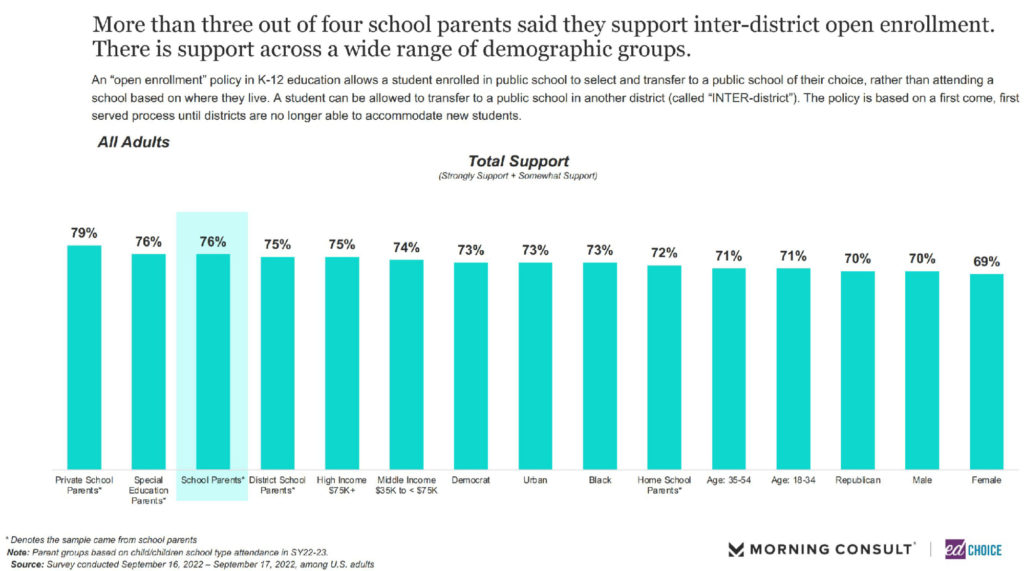EdChoice Public Opinion Tracker: Top Takeaways September 2022
We began our Public Opinion Tracker project in January 2020 to observe the country’s evolving perspectives on K–12 education. This is now the fourth school year in which we will be polling a nationally representative sample of Americans and American parents every month to take their pulse on the education issues of the day.
As this new school year begins, we have adapted some of our frequently recurring questions to further our perspectives on school choice, school safety, learning loss, and other vital K–12 issues.
1. Education is a voting issue for fewer people compared to last month. We present respondents a number of policy issues they might consider when casting their votes for local, state, and federal offices. The shares of Americans who indicated that education issues were one of the top three issues they would consider when choosing a candidate for local and federal offices (25% and 18%, respectively) reached their lowest levels since March. Additionally, the percentage of people who would consider education issues when voting in state elections (21%) dropped to the lowest level seen since we began asking this question in November 2021. Other notable policy issues also decreased in importance. “Economic issues” remains the most commonly-cited voting issue, but the share of people who named it a top-three issue for federal elections declined six percentage points, perhaps a sign that the shock of inflation has waned. Another month after the overturning of Roe v. Wade, women’s issues declined by the same share for federal elections.
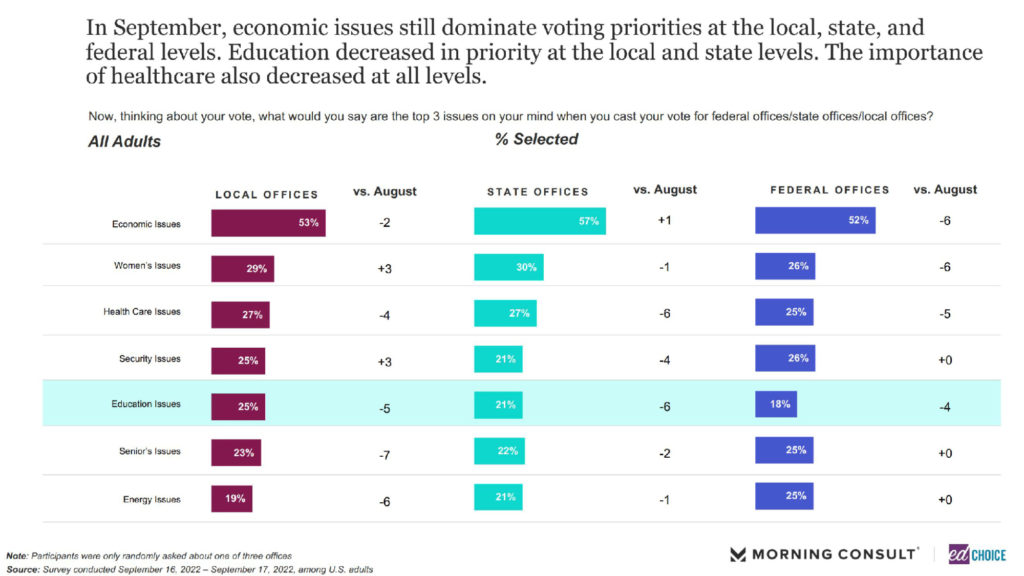
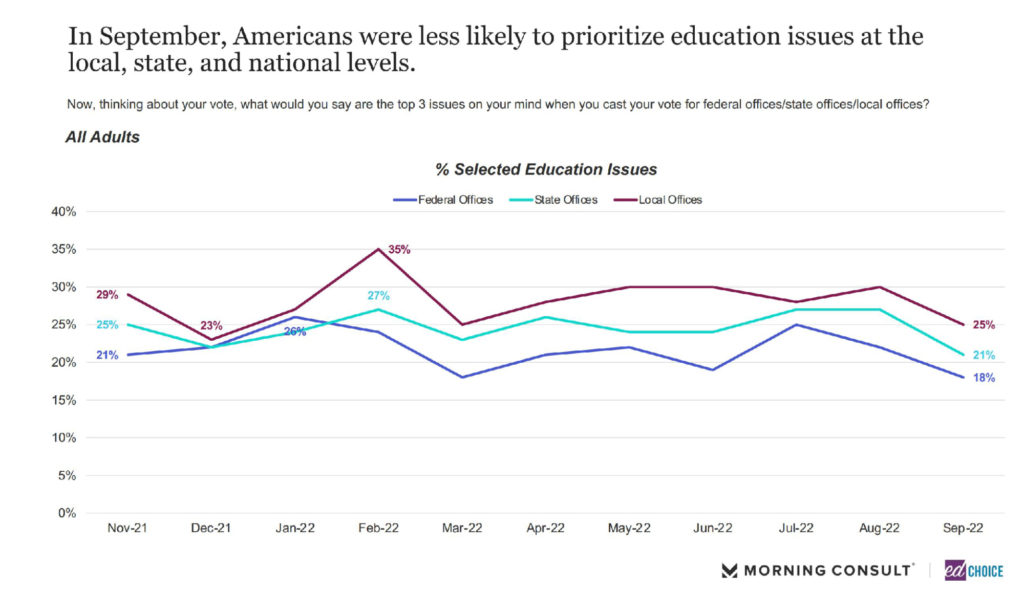
2. About one-third of parents see their children’s schools as being political. But they are just as likely to see their children’s schools as apolitical as they are political. A new question we added to the public opinion tracker asked parents how they think the political values of the schools their children attend compare to their own. About a quarter of parents (26%) did not know or had no opinion, and 37 percent felt their school wasn’t political at all. The remaining parents who did recognize political values in their children’s schools were most likely to say the school’s ideology matched their own (17% of all parents). Twelve percent of parents thought their child’s school was too liberal, and the remaining eight percent thought their child’s school was too conservative.
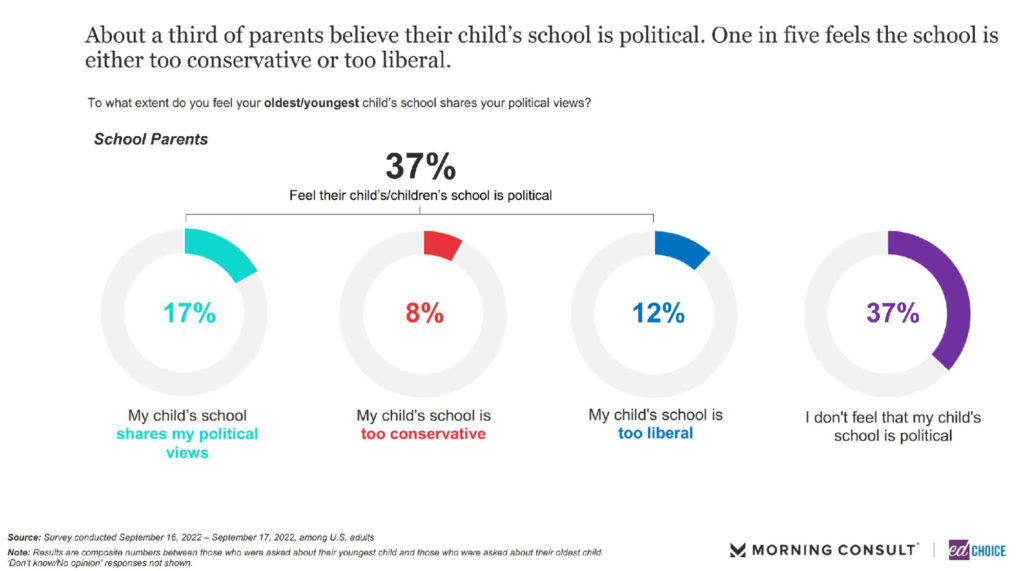
3. Parent concern about a violent intruder entering school remains high. In the weeks following the tragedy in Uvalde, Texas, we began asking parents how concerned they were about a violent intruder entering their children’s schools. In June, 42 percent of parents said they were “extremely” or “very” concerned. That number jumped another eight percentage points in July. In September, or four months after the Uvalde tragedy, the level sits at 46 percent. It appears plausible that nearly half of parents are seriously worried about a threat like a mass shooter at their kids’ schools, regardless of how recent a national tragedy has occurred.
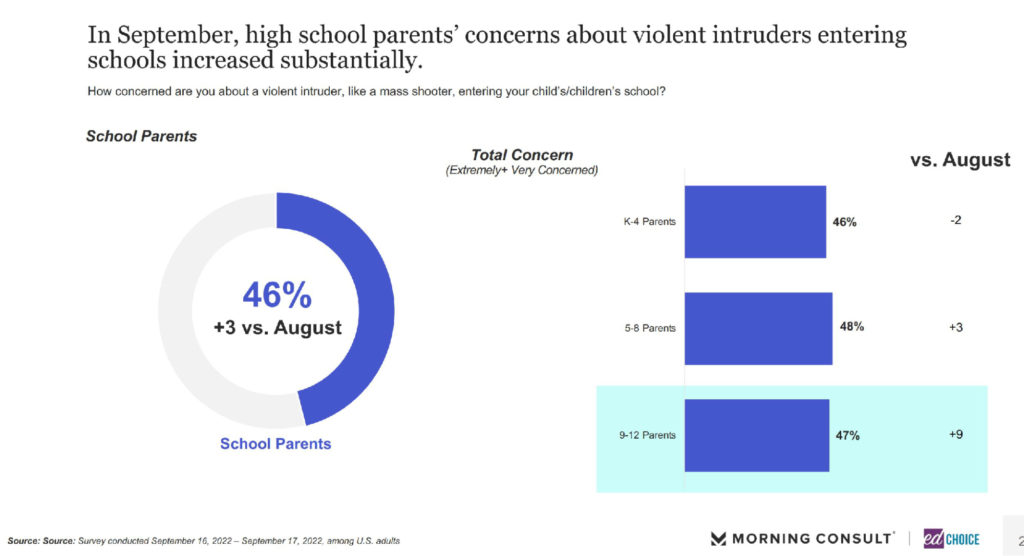
4. Being informed about historic declines in national test score trends has minimal impact on parents’ perceptions of their children’s learning. In June 2022, we saw an impressive jump in the share of parents who felt their children were progressing “very well” academically, emotionally, and socially. While less than a third of parents thought this highly of their children in these areas in December 2021 (32%, 29%, and 27%, respectively), about half of parents thought their children were developing very well by the end of the spring semester. This shift was not a fluke. In September, positivity about children’s progress in school remains substantially higher than levels we saw before June, with 50 percent, 45 percent, and 49 percent of parents saying their children were excelling academically, emotionally, and socially.
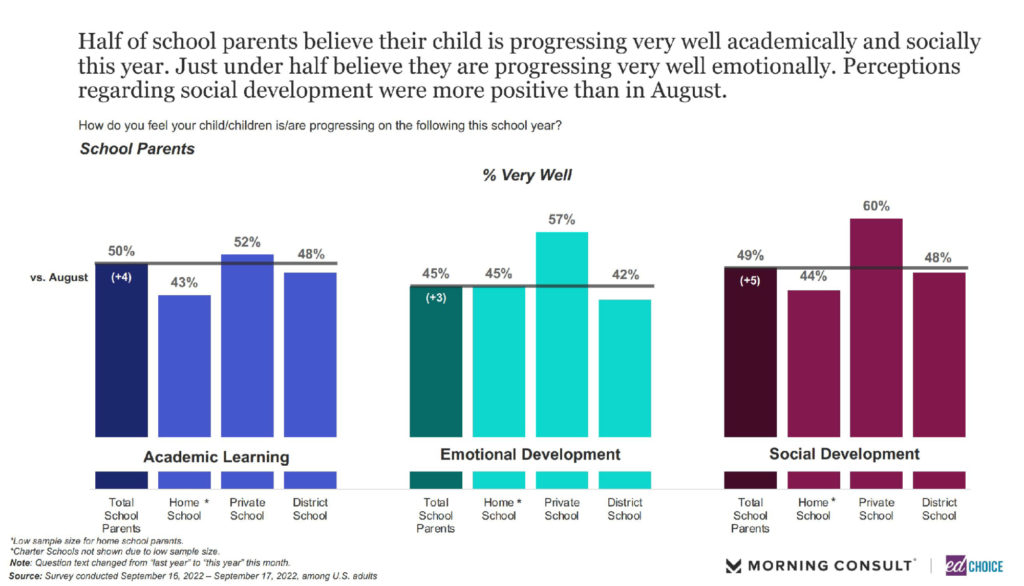
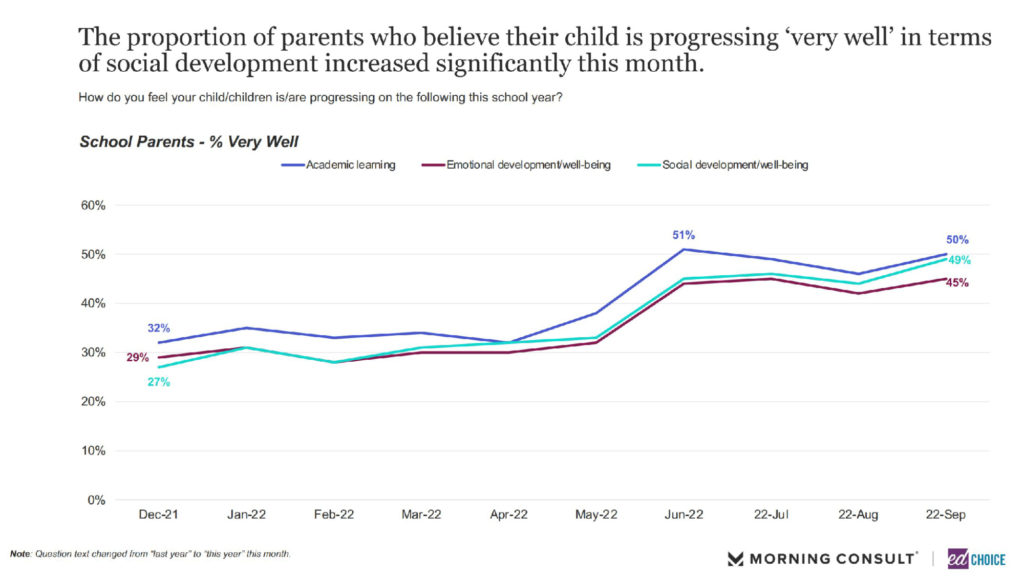
On September 1, the National Center for Education Statistics (NCES) released the third grade reading and math scores from the 2022 National Assessment of Educational Progress (NAEP), and the results were not encouraging. In NCES’s words, we saw “the largest average score decline in reading since 1990, and the first ever score decline in mathematics.” The obvious culprit was the pandemic and schools’ responses to it, as Mike McShane, our Director of National Research, eloquently articulated.
We decided to run a split-sample question about children’s academic learning and development to see whether the national trend declines affected how parents viewed their own children’s educational experiences. By random selection, some parents saw the question about their child’s progress without any reference toward national NAEP score trends. The other group was first told that the results for 9-year-olds in the most recent national assessment were distinctively poor before being asked how they felt their child was developing this year. Sometimes, learning about a trend can prime a respondent to interpret a situation close to them similarly. If that was the case for students’ development, we might expect parents who learned about NAEP score trends to be more negative about their child’s development than those who did not. In our survey, we found no meaningful difference. Parents who saw information about NAEP were only one percentage point less likely to say their children were developing very well academically.
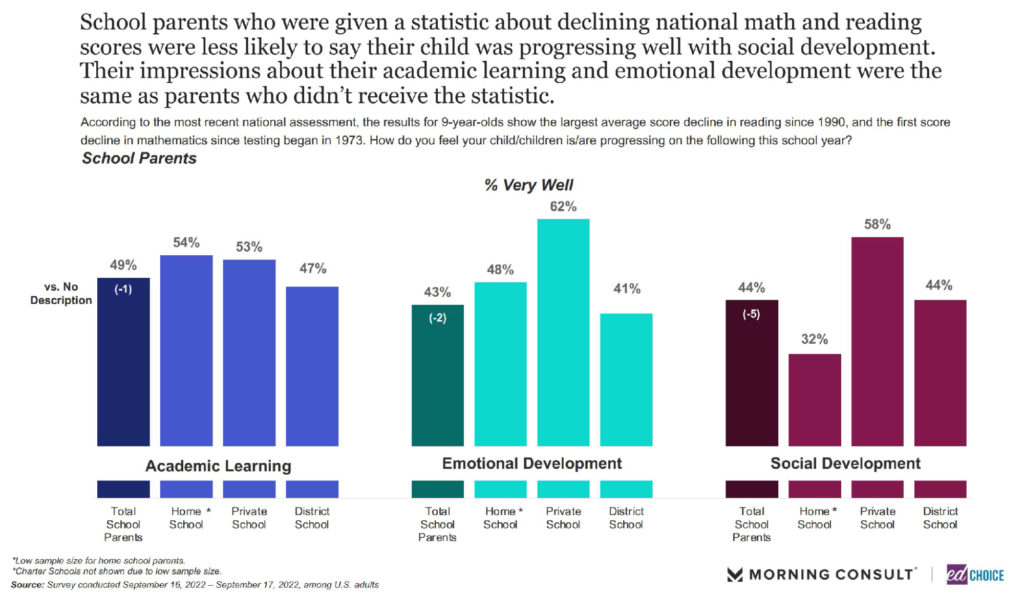
5. News media—rather than friends, family or schools—seems to drive attention around teacher shortages. About seven out of 10 adults and 73 percent of parents have heard about teacher shortage issues in the last month. News media appears to be driving this conversation, as 59 percent of adults who had heard about teacher shortages said they heard about the issue from national media, and 52 percent pointed to local media. Similarly, 65 percent of parents who had heard about teacher shortages heard about it from national media, and 60 percent from local media. Fewer people have heard about the national trends of disenrollment from public schools, 42 percent of adults and 48 percent of parents. About half of each of these groups who had heard of public school enrollment dropping saw national and local news media addressing it. Respondents were no more than half as likely to have heard about either of these issues from schools, school districts, friends, families or neighbors.
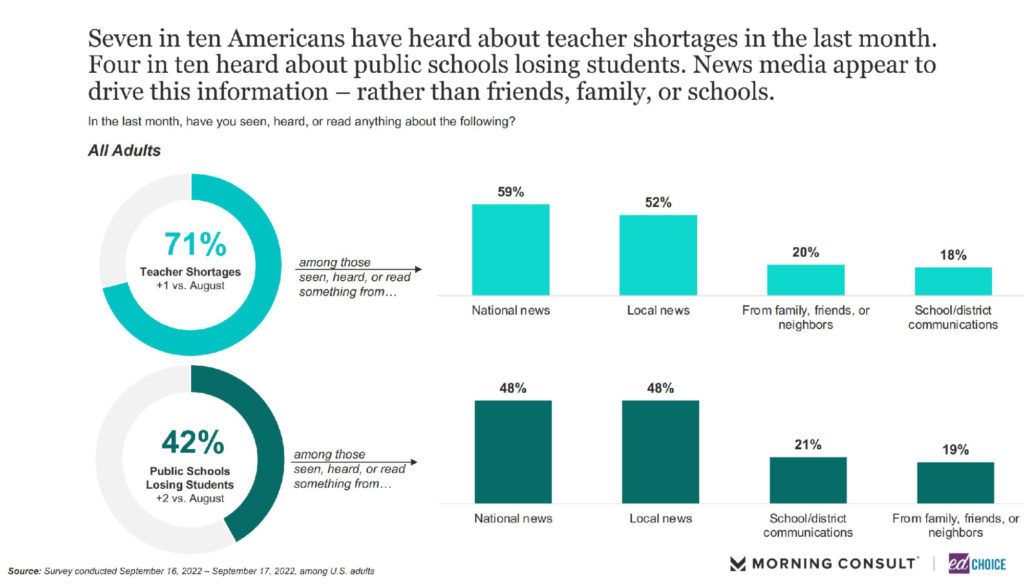
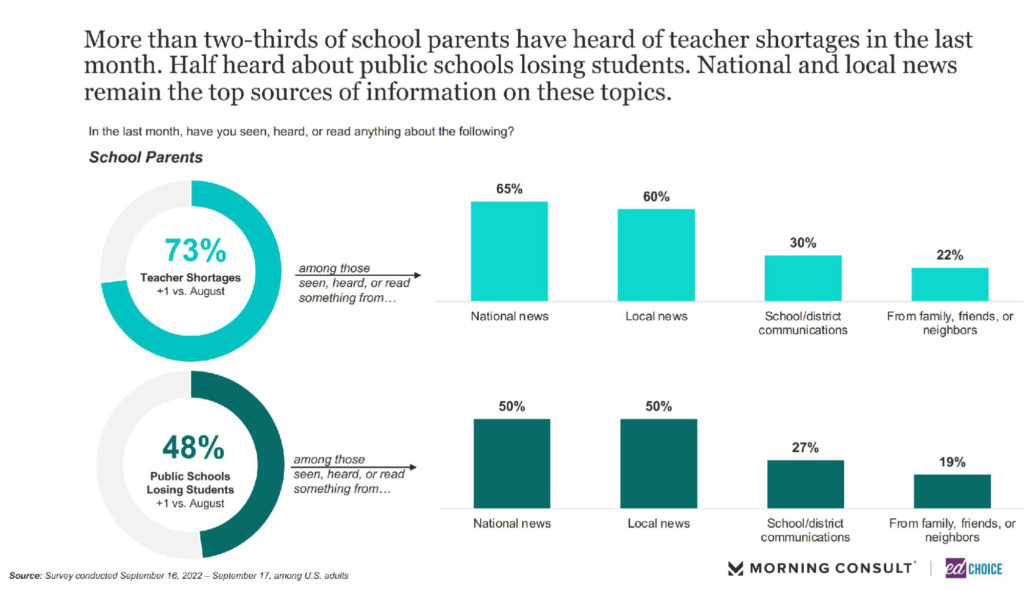
6. Parents are increasingly favorable toward homeschooling. When the pandemic forced more education to take place in the home, we began asking parents whether COVID-19 had affected their perception of homeschooling. With the worst of the virus behind us, we simplified the question in September, asking parents their overall opinion of homeschooling with no reference to the pandemic. More than two thirds (69%) of parents said they are favorable toward homeschooling, and just over a quarter (26%) said they are opposed to it.
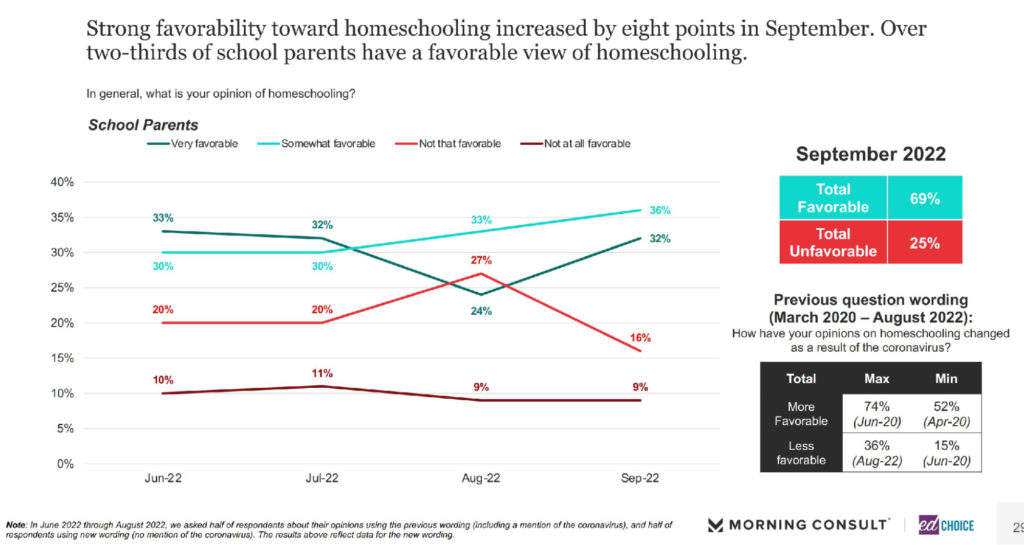
7. A majority of parents continue to most prefer at least one day of schooling per week to occur inside the home. Arguably, 2022–23 is the first school year since the pandemic began when COVID-19 concerns have taken a backseat. Despite that, there is some indication that parents would rather not completely return to the normalcy of the pre-pandemic era.
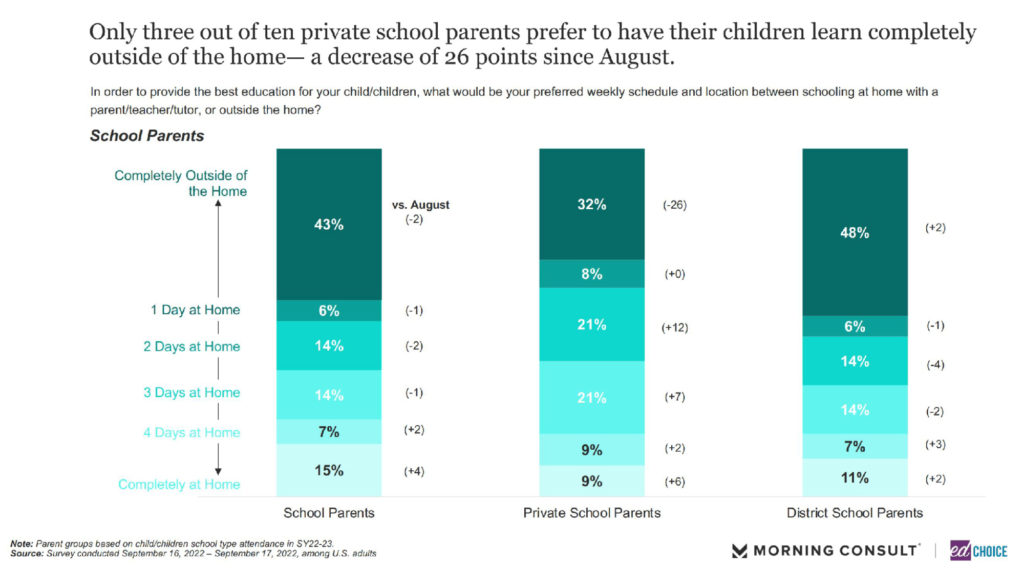
8. Support for school choice remains high. More than three quarters of parents and 70 percent of all adults support education savings accounts, holding steady with trends seen throughout the year. In addition to private school and homeschool parents, parents of children with special needs were more likely to support ESAs than the average parent. Seventy-three percent of parents supported vouchers and charter schools, respectively, compared to about two-thirds support from the general public. Special education parents were especially likely to support these choice programs as well. More than three-quarters of parents and more than two-thirds of adults support open enrollment policies in public schools.
